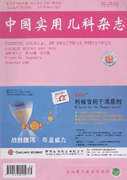ObjectiveTo compare several tools for assessing asthma control,which were used internationally and domestically,and to explore children’s asthma control tools complying with the domestic measurement ways. MethodsBy adopting prospective,multi-centre,double-blind and control test,239 patients (totally 700 cases) were studied in Xiamen,Nanning,Haikou,Qingdao,and Chengdu,and they were observed and evaluated for three months,and recorded the levels of asthma severities,lung function values (FEV1% and PEF),the Chinese version of children Asthma Control Test (C-ACT) scores,the Chinese version of the Pediatric Asthma Quality of Life Questionnaire (PAQLQ). Results The reliability of the ACT survey,as determined by Cronbach’s α-coefficient,was 0.8546; the FEV1% values,PEF values and C-ACT scores had very significant differences in the four levels of asthma severity respectively(P < 0.01). The more severe the asthma was,the lower the FEV1% values,PEF values or C-ACT scores were. The percent predicted FEV1% values,percent predicted PEF values and C-ACT scores had very significant differences in the three levels of asthma control respectively. C-ACT scores of well controlled,not well controlled and very poorly controlled asthma were respectively 24.46,21.85 and 15.37. Receive operating characteristic (ROC) curve analyses signified that asthma was very poorly controlled when the C-ACT scores were less than or equal to 19,it was not well controlled when the C-ACT scores were 20,21,or 22,and it was very well controlled when the C-ACT scores were greater than or equal to 23. ACT scores correlated significantly with the symptoms domain,the activity domain,and the emotional domain on the PAQLQ through multi-independent linear regression. Conclusion The Chinese version of the C-ACT is found to be a reliable and valid tool for measuring asthma control.

